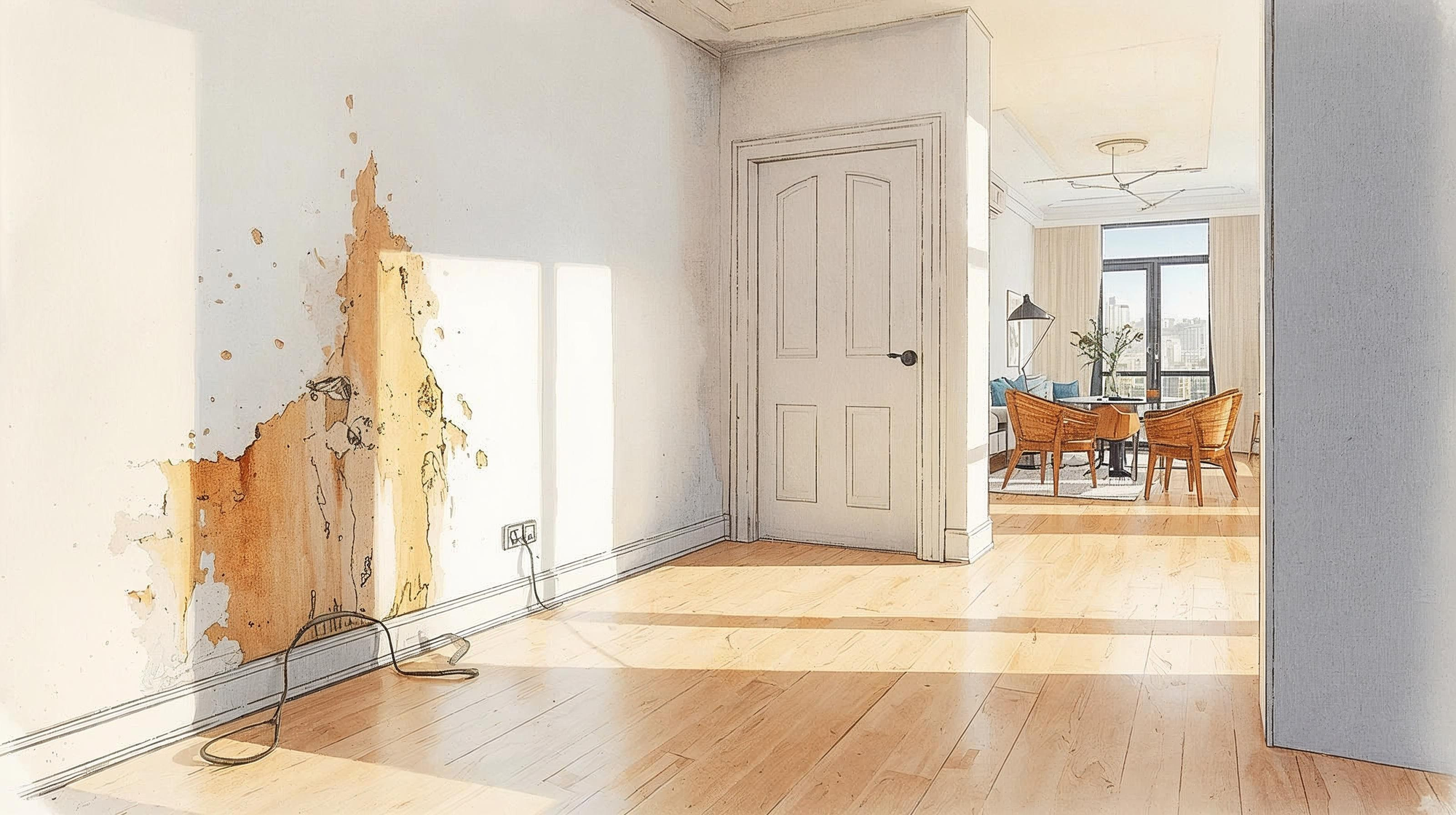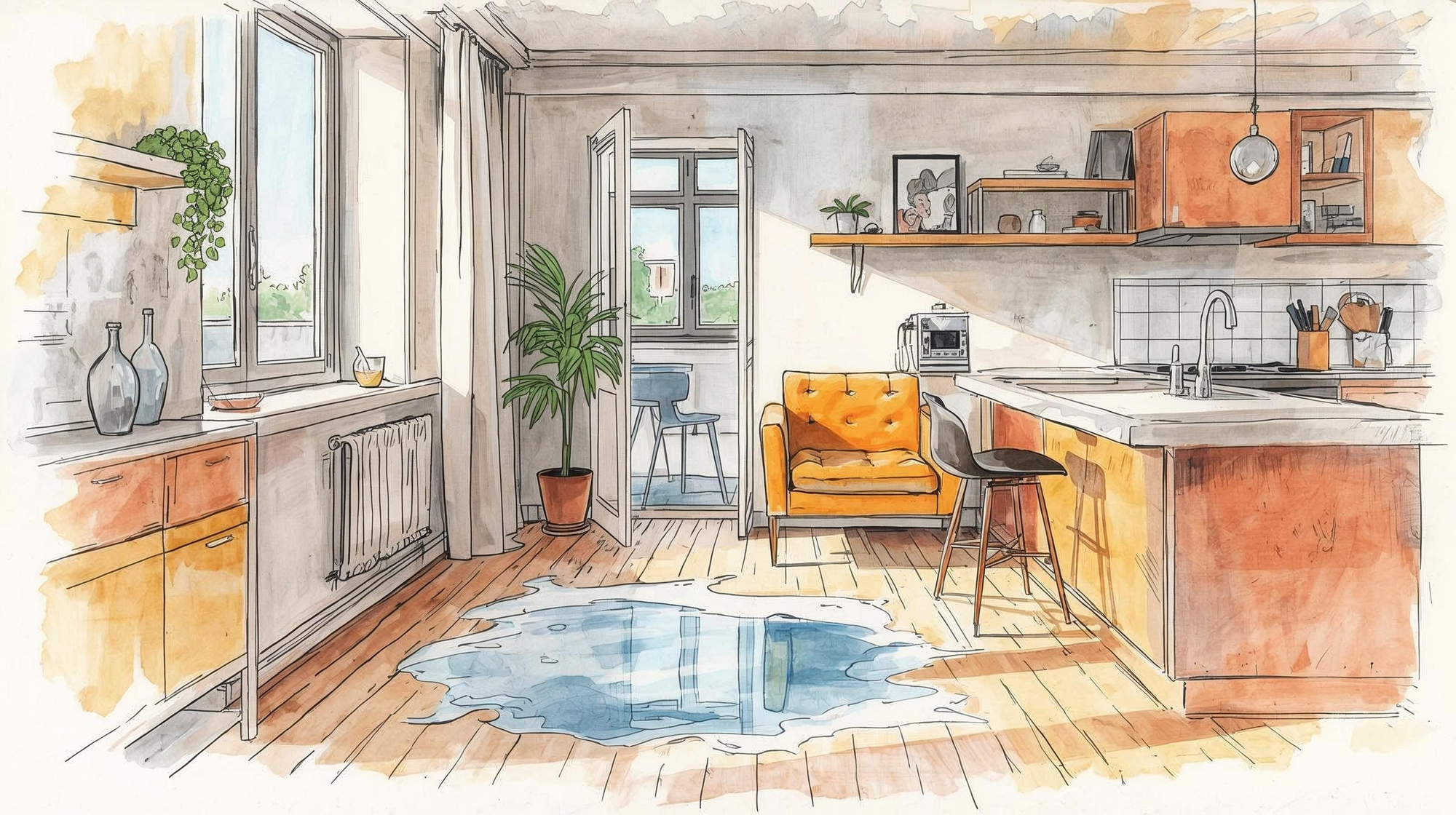
Image: A person inspecting a wall with a flashlight, looking for defects
Avoid future headaches by thoroughly inspecting these 10 critical items before accepting your new apartment.
1. Walls and Ceilings
Don’t just glance at the surfaces. Use a flashlight or natural light to scrutinize every inch for hairline cracks, paint blemishes, or bubbling plaster. Pay extra attention to the ceilings as they are prone to water leaks from the unit above. These seemingly minor issues can quickly escalate and become challenging to fix once you’ve moved in.
2. Flooring
Walk across the rooms to sense any unevenness. For wooden floors, examine the joints, color, and feel for any swelling due to moisture. For tiled floors, gently tap the surface with a hard object; a hollow sound indicates uneven tiling, which can lead to tiles popping off over time. Flooring repairs can be costly, so be thorough in your inspection.

Image: A person inspecting a door, checking for smooth operation
3. Doors and Windows
From the main entrance to the balcony, operate each door and window multiple times to ensure smooth opening and closing. Wooden doors should be flat and not warped. Locks must be secure and free from jamming. For glass doors, check the rubber seals for a tight fit to prevent noise and water ingress. Don’t be afraid to give them a good test—they’ll need to withstand more pressure once in daily use.
4. Balcony and Railings
Give the balcony railings a good shake to ensure they’re sturdy and don’t wobble. Measure the height to ensure they meet safety standards. Inspect the balcony floor for water pooling or blocked drainage holes. Even a small amount of moisture can lead to water seepage into your living spaces. If you spot any issues, insist on having them addressed before signing off.
5. Electrical System
Bring a voltage tester to check each outlet and switch. Turn on multiple appliances simultaneously to test the system’s load capacity. Lights should illuminate evenly without flickering. Obtain a copy of the apartment’s electrical schematic for future reference, making it easier to troubleshoot any issues.
6. Plumbing
Flush all toilets, run all taps and showers, and observe the water flow. Weak water pressure could indicate a blockage. Pour a bucket of water onto the bathroom floor to check for proper drainage—standing water will lead to mold and unpleasant odors.
7. Bathroom Ceilings
This area is prone to water damage. Look for yellow stains or musty smells, which could indicate a leak from the apartment above. Insist on repairs before moving in, as addressing this issue later will involve your neighbors and become more complex and expensive.

Image: A person checking the smoke detector to ensure it’s functioning properly
8. Fire and Smoke Detectors
Verify the placement and functionality of these life-saving devices. Don’t skip this critical safety step.
9. Included Furniture and Appliances (if any)
If your apartment comes with built-in cabinets, bathroom fixtures, or wall units, test each component. Turn on the stove, open and close cabinets, flush the toilet, and operate the shower. Inspect glass and stone surfaces for scratches. Hardware such as hinges and drawer slides should operate smoothly without jamming.
10. Utility Meters and Handover Documents
Before signing off, record the readings of your electricity and water meters. Cross-reference these with the handover documents to ensure you’re only paying for consumption after taking possession. This small step can prevent future billing headaches.
Tips for the Handover Process: Bring a measuring tape, voltage tester, and a camera to document the entire inspection process. Consider hiring an independent inspection service for a few million VND—it could save you far more in potential repairs.
Only move in when all items have been satisfactorily addressed. If issues arise, document them in writing and request that the developer rectify them before the official handover.








































